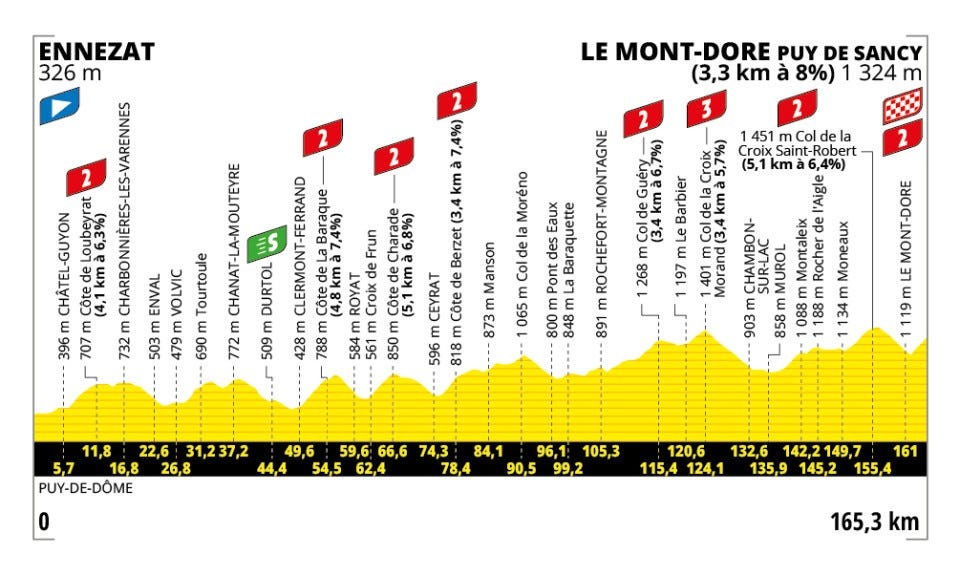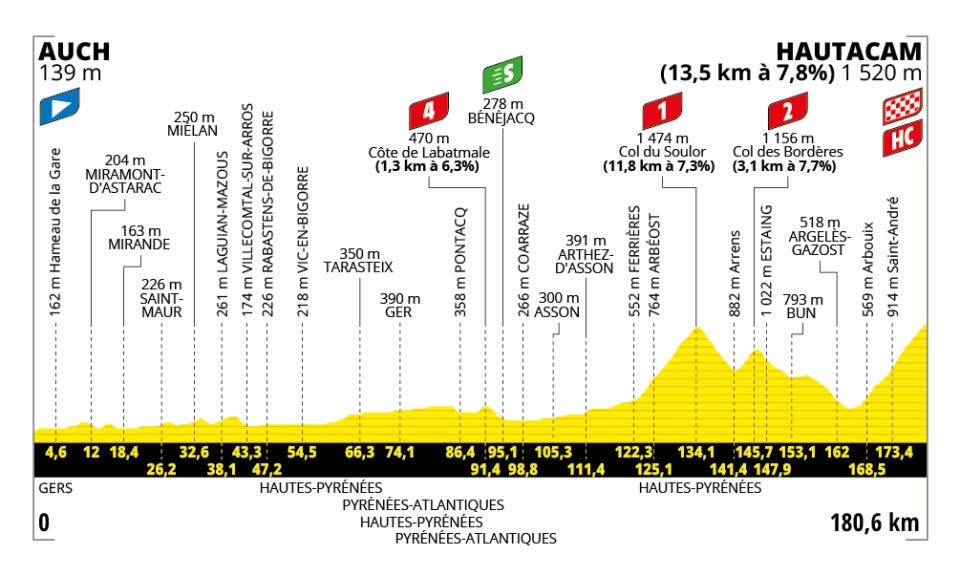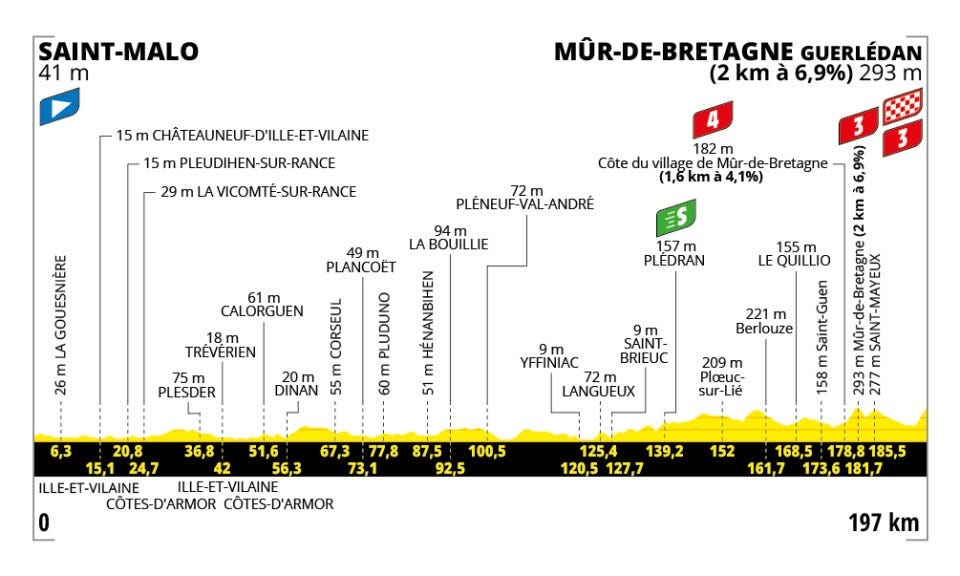Tour de France Week: The Five Stages You Need to Watch
Along with a 6th bonus where the last 30 minutes will be great
Every Grand Tour (three week long cycling races) takes on its own character and has a different feel for its biggest days. For example the Giro d’Italia often has punishing major climbs one after another for days on end before going over a true giant of a climb to attempt to decide the overall that way (sometimes the Giro’s plan even works).
Races That Matter in Cycling
It was only 10 days ago that Simon Yates finished his career masterpiece, winning the Giro d’Italia on the slopes of the Colle delle Finestre where his worst day as a professional cyclist had taken place in 2018 (lost 32 minutes while leading the race overall). It was without a doubt a great moment and a fantastic ending to a strong Giro.
The Vuelta a Espana takes riders through weeks of flat or hilly stages that appear relatively boring except they all have a short climb with a horrific gradient at the end so everyone watches the last 30 minutes. Meanwhile the Tour de France is marked by the geography of the country much more that Spain or Italy. In that France has way more flat land and therefore must spend much more time away from the truly challenging mountains most years. This makes the Tour de France have much easier choices for a post like this one: the Five Stages you need to watch.
These are presented in chronological order
Stage 10 - Ennzat to Le Mont-Dore (Puy de Sancy) - July 14
On account of starting in Northern France and then continuing to the Northwest corner of the country, the first significant climbing of the race comes after well over a week of racing and right before the first of the two rest days. After nine days of little to no climbing and when it is there like the Mur de Bretagne on stage 7, it’s often a shorter effort with a lighter gradient. Notably, climbs in the Tour de France are categorized by difficulty and this stage has the first climbs at a category 2 level. And it has seven of them. Also it is Bastille Day. Short of winning the Tour, the best thing a French rider can do is win on Bastille Day. And everyone racing knows this and uses it again the French riders tactically. More on that closer to the actual day.
Stage 12 - Auch to Hautacam - July 17
The first time the race moves into the mountains and it is a brute of climb to Hautacam. This climb has been used six times previously in the Tour de France. And on five of the six visits, the wearer of the leaders yellow jersey at the end of the stage has gone on to win the Tour (the only exception is Cadel Evans in 2008). There are other climbs and the route isn’t easy, but Hautacam is the thing that matters especially as the first summit finish of the race.
Stage 13 - Loudenville to Peyragudes (Individual Time Trial) - July 18
We rarely see a proper mountain time trial in the Tour de France. Often we see descents and/or hilly time trials but not an outright mountain one. Not since Tadej Pogacar took the yellow jersey from Primoz Roglic on the last day in 2020 have we seen a proper mountain time trial. 10.9 km might not seem like a lot, but when it includes 8km at a 7.9% gradient and no teammates, there will be nowhere to hide if the legs aren’t there.
Stage 18 - Vif to Courchevel (Col de la Loze) - July 24
The Col de la Loze hasn’t been around very long. The road (which is really just a cycling path) only opened in 2018 and the race has only visited twice (2020 and 2023). Notably, the slopes of the Col de la Loze are where Tadej Pogacar disintegrated in 2023. It hasn’t happened again since. Whereas most climbs have 30-40 seconds available between the best climbers, this stage (along with Mont Ventoux on Stage 16) could have minutes on offer because of the difficulty of this climb. In addition to the Col de la Loze, this monster of a day also includes the Col du Glandon and Col de la Madeleine. And all three are 20km climbs that go up to 2000 meters or beyond.
Stage 19 - Albertville to La Plagne - July 25
The best days of racing in the mountains are often those the day after a massive mountain stage. Such is this stage. It is by no means easy. It only appears easy in comparison to the Col de la Loze on the previous day. And yet, as the last mountain stage, it is likely to have larger time gaps and a stage win fought for among the real contenders for the overall rather than the breakaway.
Bonus Stage - Stage 7 - Mur de Bretagne - July 11
The bonus stage here is simple: we all need something to watch during the first week and ideally given the stakes are lower, it needs to be a day we watch the end of instead of all of. Enter the Mur de Bretagne. This is a short climb that often matters a little. It’s 2 km at 6.9% gradient. Enough to open small gaps, but not enough to do real lasting damage unless someone is having an awful day. And importantly, it is climbed twice. Tune in 45 minutes before the stage finish and get two climbs of this thing as the route climbs in once, take the peloton through a loop around town and then climbs it a second time to finish the stage.









